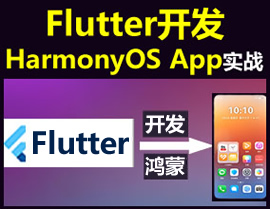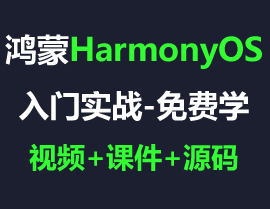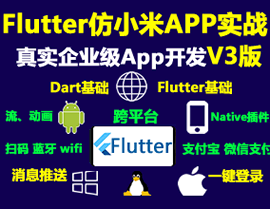uni-app cover-view与web-view组件共用时 v-if由true转false未完全隐藏
uni-app cover-view与web-view组件共用时 v-if由true转false未完全隐藏
| 开发环境 | 版本号 | 项目创建方式 |
|---|---|---|
| uniapp/App | ||
| Windows | Windows 10 专业版 20H2 | HBuilderX |
| HBuilderX | 3.4.8 | |
| Android | Android 11 | |
| 华为 | ||
| nova3 |
产品分类:uniapp/App
PC开发环境操作系统:Windows
PC开发环境操作系统版本号:Windows 10 专业版 20H2
HBuilderX类型:正式
HBuilderX版本号:3.4.8
手机系统:Android
手机系统版本号:Android 11
手机厂商:华为
手机机型:nova3
页面类型:vue
vue版本:vue2
打包方式:云端
项目创建方式:HBuilderX
示例代码:
<template>
<view class="container">
<!-- 观看倒计时 -->
<cover-view class="countdown" >
<cover-view>您还需观看</cover-view>
<cover-view style="color:#E60000;margin-left:10px;">{{countDownInterval}}{{isVerifyFace}}
</cover-view>
</cover-view>
<!-- pdf文件 -->
<web-view :src="pdfSrc"></web-view>
<!-- 蒙版弹窗 -->
<cover-view class="mask" v-if="isVerifyFace">
<cover-view class="mask-content">
测试
</cover-view>
</cover-view>
</view>
</template> <script>
export default {
data() {
return {
isVerifyFace: false, // 是否检测人脸
countDownInterval: 0, // 定时器
pdfSrc: '', // pdf文件地址
}
},
onShow() {},
onLoad(option) {
this.isVerifyFace=true
setTimeout(()=>{this.isVerifyFace=false
},2000)
},
beforeDestroy() {},
methods: {}
}
</script> .container {
position: relative;
}
.countdown {
width: 100%;
background-color: #ffffff;
text-align: center;
display: flex;
position: fixed;
left: 0;
top: -40px;
justify-content: center;
align-items: center;
}
.mask {
width: 100%;
height: 100%;
display: flex;
justify-content: center;
align-items: center;
position: fixed;
/* top: -70px; */
left: 0;
background-color: rgba(0, 0, 0, 0.9);
filter: alpha(opacity=90);
}
.mask-content {
display: flex;
width: 200px;
border-radius: 20rpx;
justify-content: center;
align-items: center;
padding: 40rpx;
background-color: #ffffff;
}提供可以复现的demo,方便排查
11111
你好,解决了吗
在 uni-app 中,当你同时使用 cover-view 和 web-view 组件,并且通过 v-if 控制它们的显示与隐藏时,可能会遇到 v-if 由 true 转为 false 时,组件未完全隐藏的问题。这通常是由于 cover-view 和 web-view 的渲染机制导致的。
问题原因
cover-view 是覆盖在原生组件之上的视图容器,而 web-view 是一个原生组件。原生组件的渲染和普通组件的渲染机制不同,可能会导致 v-if 切换时,cover-view 无法正确隐藏。
解决方案
以下是几种可能的解决方案:
1. 使用 v-show 替代 v-if
v-show 是通过 CSS 的 display 属性来控制组件的显示与隐藏,而不是直接销毁和重建组件。这样可以避免 v-if 切换时可能带来的渲染问题。
<template>
<view>
<cover-view v-show="isVisible">Cover View Content</cover-view>
<web-view v-show="isVisible" src="https://example.com"></web-view>
</view>
</template>
<script>
export default {
data() {
return {
isVisible: true
};
}
};
</script>2. 使用 key 强制重新渲染
通过给 cover-view 和 web-view 添加 key 属性,可以在 v-if 切换时强制重新渲染组件。
<template>
<view>
<cover-view v-if="isVisible" :key="isVisible">Cover View Content</cover-view>
<web-view v-if="isVisible" :key="isVisible" src="https://example.com"></web-view>
</view>
</template>
<script>
export default {
data() {
return {
isVisible: true
};
}
};
</script>3. 使用 z-index 控制层级
如果 cover-view 未完全隐藏,可能是因为它的 z-index 设置过高,导致它仍然显示在其他内容之上。你可以尝试调整 cover-view 的 z-index 值,确保它在隐藏时不会遮挡其他内容。
<template>
<view>
<cover-view v-if="isVisible" style="z-index: 1;">Cover View Content</cover-view>
<web-view v-if="isVisible" src="https://example.com"></web-view>
</view>
</template>
<script>
export default {
data() {
return {
isVisible: true
};
}
};
</script>4. 使用 setTimeout 延迟隐藏
在某些情况下,v-if 切换时可能需要一些时间来完全隐藏组件。你可以使用 setTimeout 延迟隐藏操作,确保组件有足够的时间进行渲染和隐藏。
<template>
<view>
<cover-view v-if="isVisible">Cover View Content</cover-view>
<web-view v-if="isVisible" src="https://example.com"></web-view>
</view>
</template>
<script>
export default {
data() {
return {
isVisible: true
};
},
methods: {
hideComponents() {
this.isVisible = false;
setTimeout(() => {
// 其他操作
}, 100); // 延迟 100ms
}
}
};
</script>







